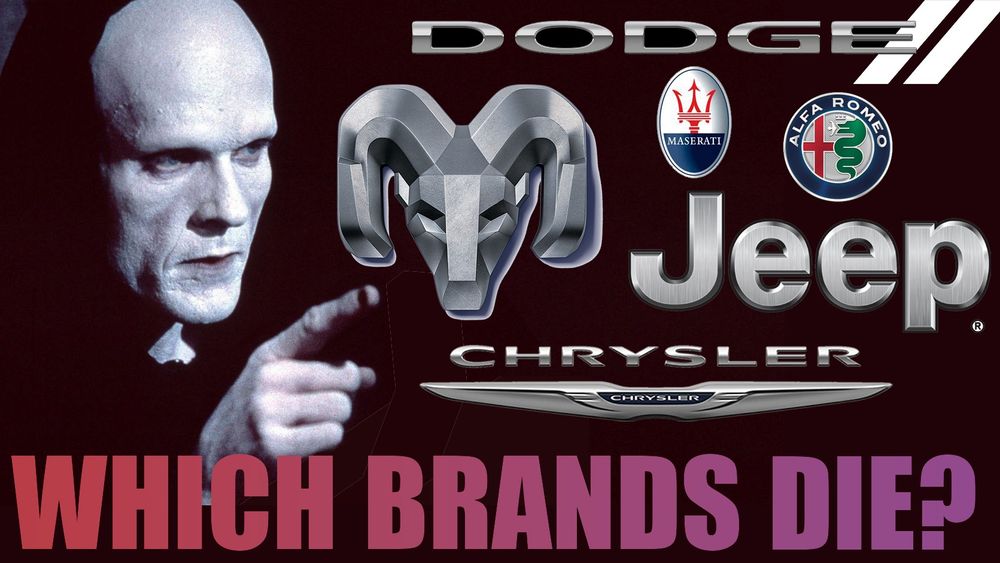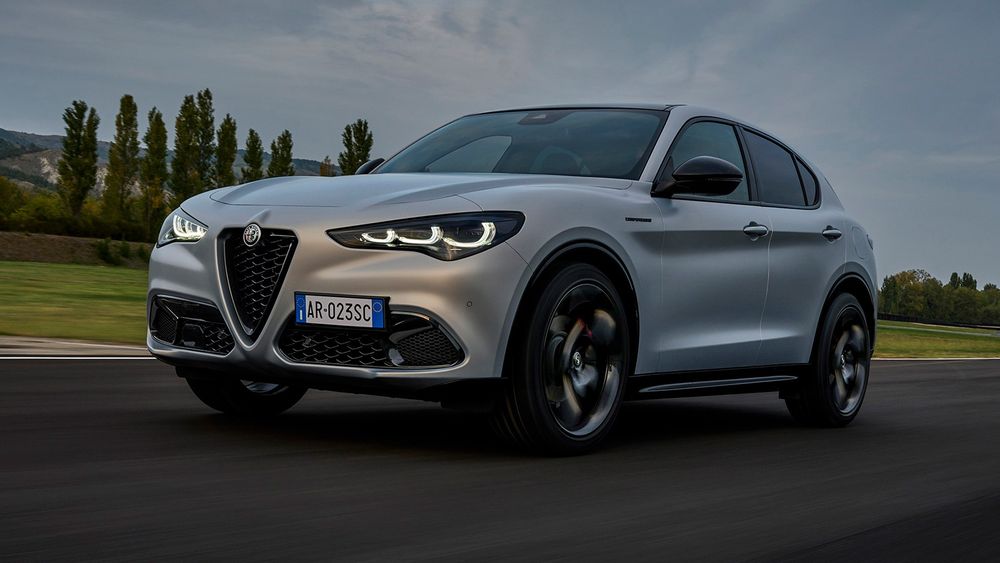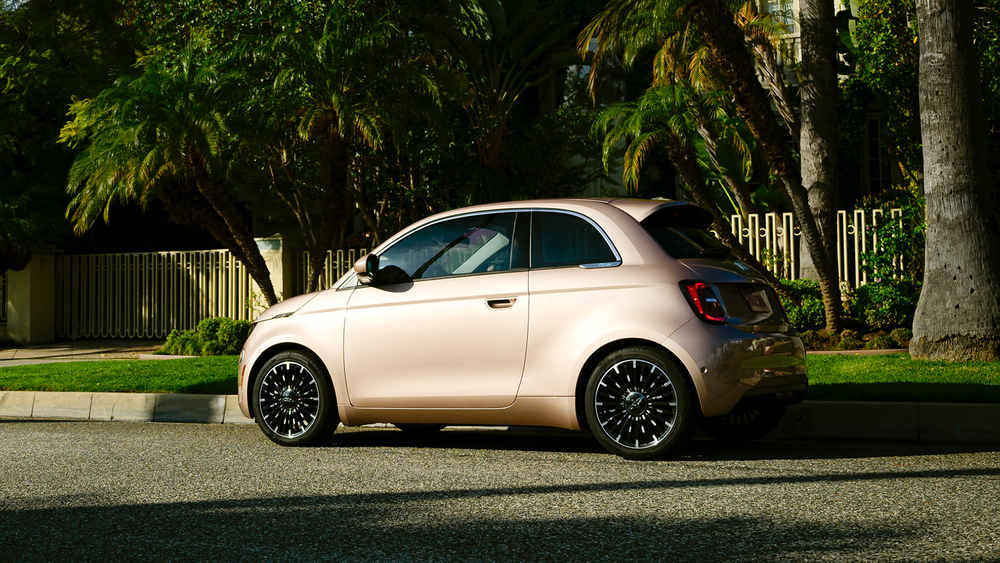Kill, Sell, or Keep? Stellantis Ponders Fate of Maserati, Chrysler, and More
Fiat, Alfa Romeo, and Dodge are also part of the discussion. Here's what we think will happen.
When Fiat Chrysler and PSA Group merged in 2021 to form Stellantis, the new automotive giant seemingly had one major flaw: an ungainly 14 brands to herd and feed. The expectation was that many would be killed off. This is an industry where even major companies tend to have two mouths to feed: a mainstream brand and a luxury one. Think Honda/Acura; Toyota/Lexus; Ford/Lincoln; Nissan/Infiniti. The Koreans have three: Hyundai, Kia, and Genesis. Tesla has only one: Tesla (we don’t count robots). Even General Motors, which had eight brands, axed four of them as part of its bankruptcy restructuring in 2009. Volkswagen is the only other automaker to buck the trend with a full stable of brands.
0:00 / 0:00
With news of the FCA/PSA merger, the speculation was instant about which brands would not make the cut, and at the top of most lists were Chrysler, Dodge, Fiat, Alfa Romeo, and Maserati. But Tavares squelched the talk by proclaiming that all 14 brands would be given a lot of rope. They were to submit 10-year strategic plans, knowing they would have financial support for the first five to prove the viability of their portfolio and business case. Three years later, none have been killed and Stellantis has added a fifteenth marque with Leapmotor, a Chinese brand that just shipped its first 800 vehicles for sale in Europe in September.
That was then. During last week’s call with analysts to discuss first-half earnings, Tavares said despite cost-saving actions taken in Europe to address high inventories, the automaker continues to struggle with falling sales, market share, revenue, and profit margins, especially in North America. Stellantis reported a $6 billion profit for the first half of the year, down a whopping 48 percent. More cutting is needed and buyouts are now being offered in North America.
Tavares said more tough measures are needed, including killing off underperforming brands. "If they don't make money, we will shut them down. We cannot afford to have brands that do not make money,” he said on the call. And his chief financial officer Natalie Knight said there could be a future discussion about the “best home” for Maserati.
Where should the axe fall? Here is our assessment of the health and fate of the brands.
Maserati
Maserati saw global sales fall by more than 50 percent to 6,500 vehicles sold in the first six months of the year, resulting in a loss of about $89 million after being in the black in 2023. Interestingly, Maserati is the only brand where the individual brand financials were spelled out, and Knight’s comments about exploring its best home unleashes speculation it could be sold off.
Who would want Maserati? Most major automakers already have a luxury brand and feel one is enough. An obvious suitor would be Ferrari. It shares the same roots: it was part of the former Fiat Chrysler until it was spun off in 2016 by the late Sergio Marchionne, then FCA CEO. Maseratis have been referred to as the poor man’s Ferrari because they historically had Ferrari-built engines under the hood—until now, with the decision to make the 2024 model year the last.
Officially, Stellantis is not considering a sale of Maserati. As the company put it in a recent official statement, "Stellantis has no intention of selling the Trident brand, just as there is no intention of aggregating Maserati within other Italian luxury groups." While we take the company at its word, that hasn't stopped rampant speculation about a possible sale, eventually. Potential suitors could come from China where there are many companies vying for the sort of credibility that could be provided by a western luxury brand name. The electric or Folgore versions would be especially attractive in China, which leads the world in EV adoption.
New vehicles for all Stellantis brands are migrating to the new STLA family of platform that can accommodate pure electric vehicles as well as internal combustion engines, but none of the current Maserati models use a STLA platform, so a buyer would not get the engineering upon which Stellantis is basing its future. But the buyer would not be disappointed by the glorious Giorgio platform that makes today’s Maseratis a treat to drive.
For now, the plan is to try to revive the brand. Tavares, who races and appreciates performance vehicles, sees enormous upside when it comes to Maserati—maybe because the high-end Italian brand has only one way to go, and that is up. After years of failed promises, the brand is in a period of transition to high-end luxury electric vehicles and has pared the lineup substantially. Production has ended for the 2024 Ghibli and Quattroporte sedans as well as the Levante large SUV.
Maserati has a sexy and exciting lineup of vehicles right now. It is focused on the Grecale compact SUV and some more niche offerings: the GranTurismo 2+2 coupe and GranCabrio convertible, as well as the MC20 two-seat mid-engine coupe and Cielo convertible. The Grecale Folgore will be joined by electric versions of the GranTurismo and GranCabrio. Electric replacements for the Levante and Quattroporte are also planned but are still at least three years away.
Tavares sees value in Maserati as the only luxury brand in his stable. The CEO could take a page from Marchionne’s playbook and spin Maserati off into a standalone brand.
Alfa Romeo
Alfa Romeo is Stellantis’s premium brand. We don’t see many on this side of the ocean, but last year Alfa had its best global sales year since 2020 and the brand CEO said it was making money. It still has a long way to go to return to former sales levels: it sold 131,000 units in 2018 and its record is almost 224,000 sales in 1990. The small lineup includes the Alfa Romeo Tonale compact SUV, the larger Stelvio SUV, and the Giulia sedan. The Giulia and Stelvio will go electric with the next generation. There are high expectations globally for the smaller Alfa Romeo Junior, an electric B-segment hatchback. This might be a brand that Tavares allows to use its full length of rope before making any drastic decisions.
Chrysler and Dodge
Chrysler has been subsisting with a single model: the Pacifica minivan, which is a fine vehicle but in a segment that has been in decline. The Chrysler promise has been one new nameplate every year, starting in 2025 with a production take on the Airflow concept. Larger crossovers were to follow.
But Tavares did not mention the Chrysler brand during the lengthy earnings call, which might be telling. Also of note: Chrysler brand CEO Chris Feuell is already doing double duty as Dodge brand CEO with the retirement of long-time Dodge chief Tim Kuniskis.
Chrysler was to be the high-tech, premium brand, letting Dodge stick with its muscle car roots. To that end, the Dodge Charger Daytona, as a two-door and four-door, as an EV or with a gas engine, is coming later this year. It could be argued that the vehicles planned for Chrysler could go to Dodge. It might muddy the tighter brand definition, but Dodge has a history of that with a past showroom that mixed Challengers and Journeys.
Jeep
Jeep is the best-known brand and one that historically has been able to print money under owners past and present. Sales have fallen off, but Tavares is smart enough to know this is a keeper—heck if Stellantis kept only one brand, this would be the one. But it needs fixing. Bringing back a compact SUV next year to fill the hole left by the discontinued Jeep Cherokee is a start and adding a $25,000 Jeep Renegade replacement in 2026 will help. He also needs to sweeten the pot with better pricing to move the big boys: the Jeep Wagoneer full-size three-row SUV and more premium Jeep Grand Wagoneer. Even with discounts they will bring in profit and enhance the premium image Tavares wants to foster while Wranglers keep the faithful happy and the brand on point. Adding new electric nameplates in the form of the Jeep Wagoneer S and off-road Jeep Recon may bring in some new buyers, but Tavares might want to curb his volume expectations until consumers are more willing to embrace EVs.
Ram
Ram and Jeep are the brands that made FCA an attractive dance partner in the first place. While both have seen their fortunes dip, they continue to be household names and deliver some of the most profitable models.
The Ram 1500 full-size pickup truck got a refresh this year, which should improve its fortunes. This is also the year Ram adds the REV electric version of the truck. And the real game-changer could be the Ramcharger extended-range hybrid that gives buyers the holy grail of greater efficiency and towing capability with a range of 690 miles. We still await a compact or midsize truck from Ram to compete in that segment. And Ram continues to be profitable with the help of its Pro commercial vehicle lineup. This brand is not going anywhere.
Fiat and Abarth
Judging by North America, where the Fiat 500e is the only model for sale, you would think the brand is struggling, but it is a popular powerhouse in Europe and South America. Fiat is the top-selling Stellantis brand globally and poised to increase its dominance. Among the 20 new vehicles being introduced this year is the Fiat Grande Panda, as an EV or hybrid, which allows Fiat to compete once again in the B segment.
Peugeot, Citroen, Opel, Vauxhall, Lancia, DS Autos
Tavares comes from the PSA Group so there could be some sentimentality here. He continues to feed these brands. Peugeot has a new 3008 and 5008; the Citroen C3 is an affordable B-segment vehicle to fight competition from Chinese automakers. Opel is a source of pride. Tavares bought it from General Motors and did what GM could not: turn a profit.
But Lancia and DS could be let go with little downside to the bottom line. Since 2017, Lancia has limited its sales to Italy, making it a niche player on the global stage, but there are plans to expand into more European countries. Like Chrysler it has a lineup of one: the Lancia Ypsilon. It is popular in Italy and production has begun of a new generation of the B-segment hatchback. Under FCA, Lancia versions of the Chrysler 200, 300, and Town & Country minivan padded out the lineup, but it was an experiment that failed to yield results.
Conclusion
A year from now, Stellantis will likely still have too many brands. But Tavares wants a big family. He embraces the manifesto of former FCA CEO Marchionne, which is that scale is the key to survival in the auto industry. Tavares agrees. “Stellantis is an expression of the scale you need to have. FCA was too small. PSA was too small. Stellantis is the right scale.” Even more ideal: having that scale with fewer nameplates to market and support.
Alisa Priddle joined MotorTrend in 2016 as the Detroit Editor. A Canadian, she received her Bachelor of Journalism degree from Carleton University in Ottawa, Ontario, and has been a reporter for 40 years, most of it covering the auto industry because there is no more fascinating arena to cover. It has it all: the vehicles, the people, the plants, the competition, the drama. Alisa has had a wonderfully varied work history as a reporter for four daily newspapers including the Detroit Free Press where she was auto editor, and the Detroit News where she covered the GM and Chrysler bankruptcies, as well as auto trade publication Wards, and two enthusiast magazines: Car & Driver and now MotorTrend. At MotorTrend Alisa is a judge for the MotorTrend Car, Truck, SUV and Person of the Year. She loves seeing a new model for the first time, driving it for the first time, and grilling executives for the stories behind them. In her spare time, she loves to swim, boat, sauna, and then jump into a cold lake or pile of snow.
Read More







